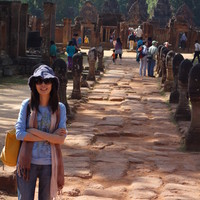Ling-yu Hung (洪玲玉)
Indiana University, Anthropology, Faculty Member
- Anthropology, Archaeology, Archaeometry, Lithic Technology, Archaeobotany, Paleoenvironment, and 18 moreCeramic Analysis (Archaeology), Chinese archaeology, Anthropology of Tibet and the Himalayas, Mesolithic/Neolithic, Hunter-Gatherer Archaeology, Origins of Agriculture, Cucuteni-Trypillian culture, History of Pigments, Prehistoric interaction of East Asia and Eurasian Steppe, Craft production (Archaeology), Ceramics (Archaeology), Neolithic Archaeology, Ethnoarchaeology, Silk Road Studies, Development of complex societies, Ceramic Petrography, Archaeological Ceramics, and Ceramics (Art History)edit
Research Interests:
When in the 1980s Tong Enzheng suggested his model of a “crescent-shaped cultural-communication belt” stretching from Northeast China and Korea along the Tibetan borderlands all the way to Yunnan, most researchers were still rather... more
When in the 1980s Tong Enzheng suggested his model of a “crescent-shaped cultural-communication belt” stretching from Northeast China and Korea along the Tibetan borderlands all the way to Yunnan, most researchers were still rather cautious about suggestions of long-distance contacts. At the time, Chinese and Western scholars alike were afraid of being accused of diffusionistic tendencies in their work, and they thus mostly decided to concentrate on local developments. Only in recent years has it again become acceptable and even desirable to discuss far-reaching exchange networks. Interestingly, the emerging scholarship on such topics has some noticeable lacunae. Discussions on China’s long-distance contacts, for instance, focus mostly on steppe connections and Western influences on the cultures of the Central Plains. By contrast, material from Southwest China has received much less attention; neither have Tong Enzheng’s considerable theoretical contributions to the understanding of...
